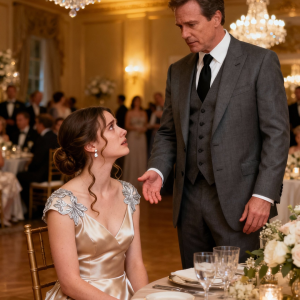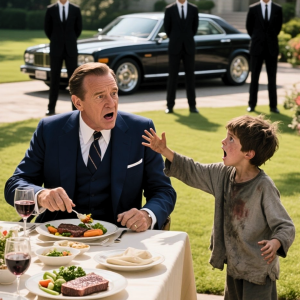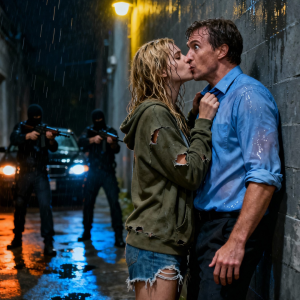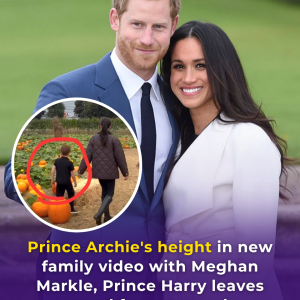
The hospital room was quiet except for the rhythmic hum of a fluorescent light and the soft whimpering of a child. Eight-year-old Maddie Foster sat curled on the edge of a bed, clutching a small teddy bear missing one ear. Her eyes were red and swollen, her words trembling. “He said he would give me candy if I stayed quiet, but it hurts so much,” she whispered.
Detective Laura Kinsey knelt beside her, her voice calm and steady. “You are safe now, sweetheart. Can you tell me who did this to you?”
Maddie hesitated. Her fingers twisted the bear’s arm as she looked toward the door. “Mr. Nolan,” she said finally. “My violin teacher.”
The words hit Laura like a blow. Patrick Nolan was a respected figure in the small town of Ravenshire, known for his charm, his music, and his dedication to mentoring children. Parents trusted him without question. He organized recitals, raised funds for the arts, and often spoke at school events about the importance of creativity. But beneath that polished exterior, something vile was hiding.
Within hours, officers arrived at Nolan’s home. The property was immaculate, every surface gleaming, every book in perfect order. In the living room stood a grand violin displayed beneath a glass case. Yet when investigators forced open a locked closet in the basement, the illusion shattered. They found a hidden camera, scattered candy wrappers, and a box filled with labeled photographs.
Laura’s stomach turned. “How many children?” she asked the forensic team quietly.
The technician looked at her, eyes dark with disbelief. “At least ten that we can confirm. Maybe more.”
News spread across Ravenshire in a wave of outrage and horror. Parents wept. Schools tightened security. The man once celebrated as a pillar of the community became a symbol of betrayal. But the deeper Laura investigated, the clearer it became that Nolan was not working alone.
Digital analysis of his laptop revealed connections to a hidden online network. Files had been exchanged regularly with another user operating from a nearby church. The username traced back to Father Gregory Ward, the pastor of Saint Mark’s Parish. He had baptized children, blessed families, and stood at the heart of the community for over fifteen years.
Laura could not believe what she was reading. She had attended services there as a child. Her mother’s funeral had been held in that very church. But the evidence was undeniable.
A warrant was issued. The task force entered the church late one afternoon, moving past the pews and into the sacristy. Behind a wooden panel near the pulpit, they found a locked compartment. Inside was a hard drive containing the same photographs and a ledger listing initials and dates. Father Ward was arrested as the congregation looked on in shock and disbelief.
During interrogation, Laura faced him across a metal table. “You were supposed to protect them,” she said. “You were supposed to be the one they could trust.”
Ward smiled faintly, his eyes cold. “People give their faith too easily,” he said. “And faith is the easiest blindfold to wear.”

The room fell silent.
The FBI soon joined the investigation. What began as a local case expanded into a network spanning several states. More names surfaced. More children came forward. Each new revelation weighed heavier on Laura’s conscience.
Weeks later, while returning home from a long night at the precinct, she found an envelope slipped beneath her apartment door. Inside was a single piece of paper with the words: You think you have ended it, but you have only touched the surface.
The message haunted her. Sleep came rarely. Every shadow seemed to hold another secret. Yet she refused to give up.
Months passed. The trials began. Reporters crowded the courthouse. Families filled the benches, clinging to hope. Maddie was the first to testify. Her small voice trembled, but her courage held. When she pointed toward Nolan, the entire courtroom went still. “That is him,” she said softly. “That is the man who hurt me.”
Laura watched from the back of the room, her throat tight with emotion. She had promised this child that she would never be alone again.
The verdict came swiftly. Both Nolan and Ward were found guilty of every charge. The judge sentenced them to life imprisonment without the possibility of parole. The courtroom erupted in tears, relief, and quiet applause. Justice, though imperfect, had been served.
After the sentencing, Laura visited Maddie in a recovery center near the coast. The little girl was painting at a small easel by the window. Bright colors covered the canvas, forming a sun over a field of flowers.
“Do you still play the violin?” Laura asked gently.
Maddie shook her head. “No,” she said. “But I paint now. I paint places where bad people cannot find me.”
Laura smiled, blinking away tears. “That is a beautiful place to live,” she said softly.
As she left the center and stepped into the golden afternoon light, Laura felt a strange mix of peace and grief. The monsters had faces she once trusted, and that truth would haunt her forever. But so would the bravery of a child who refused to remain silent.
She looked up at the sky and made herself a quiet promise. She would keep fighting for those who could not. She would listen to the whispers hidden in silence, the cries that no one else heard.
Because somewhere, in another town, another child might still be waiting to be believed.
And that was reason enough to keep going.




